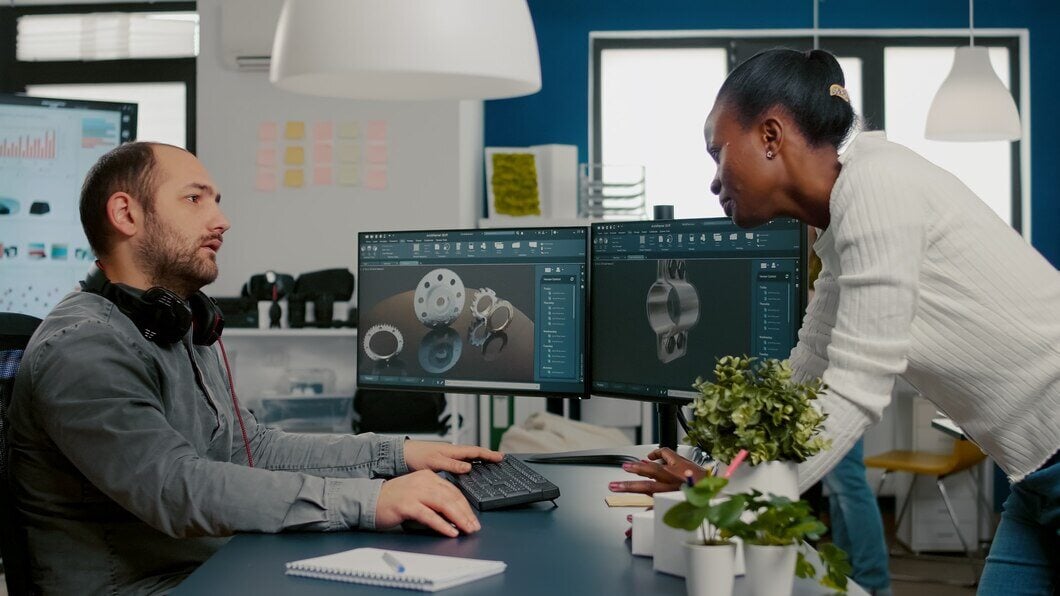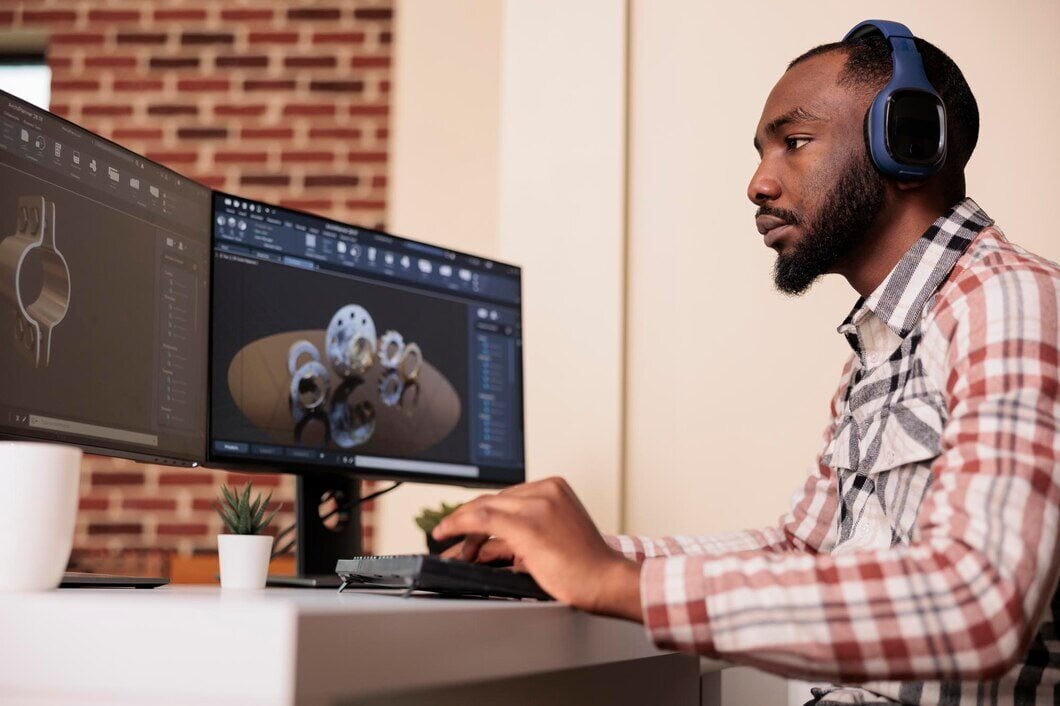Practical Tips for Effective Rapid Prototyping
Turning an idea into a functional product quickly can be challenging. Rapid prototyping makes this process easier by allowing you to create a basic version of your product in a short time. This method is crucial for testing ideas, gathering user feedback, and making necessary adjustments before full-scale development.
Rapid prototyping involves using tools and technologies to build a basic model of your product. This model doesn't need to be perfect but should represent the core features and functionality of the final product. By doing so, you can identify any flaws or improvements early, saving time and resources later on.
Effective rapid prototyping requires proper planning and execution. This involves choosing the right tools, following a structured process, and avoiding common mistakes. By following the right steps, you can ensure that your prototype meets your goals and helps pave the way for a successful product launch.
Understanding the principles and strategies behind rapid prototyping can significantly impact the success of your product development. This approach helps clear any uncertainties and paves the way for smoother transitions into later stages of development.
Understanding Rapid Prototyping
Rapid prototyping is a method of quickly creating a preliminary version of a product to test and validate ideas. This process is essential for identifying and addressing potential problems early in development. It allows you to gather user feedback, which helps improve the final product.
There are several benefits to rapid prototyping:
- Speed: Rapid prototyping shortens the development cycle by allowing quick iterations. You can make adjustments as you go, rather than waiting for a final product.
- Cost-Effectiveness: Identifying and fixing issues early on can save you significant costs later. By testing a prototype, you avoid the expenses associated with large-scale production errors.
- User Involvement: Involving users in the early stages ensures that the product meets their needs and expectations. This leads to a better end product and higher user satisfaction.
The rapid prototyping process typically involves creating a simplified model that represents the main features and functionality of the intended product. This model can be adjusted and refined based on user feedback, making it easier to finalise the design before moving on to full-scale production.
Tools and Technologies for Rapid Prototyping
Choosing the right tools and technologies is crucial for effective rapid prototyping. Different tools cater to various needs, from designing user interfaces to building physical models.
- Digital Prototyping Tools: These tools are excellent for creating wireframes and interactive models for software and web applications.
- Figma: Ideal for designing user interfaces and collaborating with team members in real time.
- Sketch: A vector graphics editor tailored for digital design with powerful features for prototyping.
- Adobe XD: Offers comprehensive tools for creating and testing user experiences.
- Physical Prototyping Tools: These are necessary for creating tangible models of physical products.
- 3D Printers: Allow you to create physical models from digital designs. Popular options include printers from MakerBot and Formlabs.
- Laser Cutters: Useful for cutting and engraving materials like wood, acrylic, and metal to create various components.
- CNC Machines: Provide precise machining capabilities, ideal for creating prototypes with complex shapes.
- Software Development Tools: For those working on software products, development environments and frameworks speed up the coding process.
- Visual Studio Code: A versatile code editor supporting multiple programming languages and extensions.
- React: A JavaScript library for building user interfaces efficiently with reusable components.
By selecting the right tools and technologies, you can streamline your prototyping process, making it faster and more efficient. This not only improves the quality of your prototypes but also accelerates the overall product development timeline.
Step-by-Step Guide to Creating a Rapid Prototype
Creating a rapid prototype involves several structured steps to ensure efficiency and effectiveness. Here is a step-by-step guide to help you navigate the process:
- Define Objectives: Start by clearly defining what you aim to achieve with the prototype. Outline the features and functionalities that need to be included to meet these objectives.
- Research and Planning: Conduct market research to understand user needs and preferences. Plan the prototype’s design and functionality based on this research. Gather all the necessary resources, including tools and team members.
- Sketch and Wireframe: Create sketches or wireframes to visualise the basic structure of your product. These blueprints will serve as a guide during the actual prototyping.
- Choose the Right Tools: Select the appropriate prototyping tools based on your product type. For digital products, tools like Figma or Sketch are useful. For physical products, consider using 3D printers or CNC machines.
- Build the Prototype: Use your chosen tools to build the initial prototype. Keep it simple, focusing on the core functionalities. Ensure the prototype is functional enough to test your primary objectives.
- Test and Gather Feedback: Test the prototype with a group of users to gather feedback. Observe how they interact with the product and note any issues or suggestions they might have.
- Iterate and Improve: Based on the feedback, make necessary changes to the prototype. This step may involve several iterations until the prototype meets your objectives satisfactorily.
Common Mistakes to Avoid in Rapid Prototyping
Even with a structured approach, it's easy to make mistakes during rapid prototyping. Avoiding these common pitfalls can save you time and resources:
- Over-Complicating the Prototype: One of the most frequent mistakes is trying to include too many features in the initial prototype. Focus on the core functionalities and keep it simple. The goal is to validate the main idea before adding more features.
- Insufficient User Feedback: Another mistake is not gathering enough user feedback. User insights are crucial for identifying issues and areas of improvement. Make sure to test the prototype with real users and gather their input.
- Ignoring the Planning Phase: Skipping or rushing through the planning phase can lead to major issues later. Take the time to research, define objectives, and plan the prototype thoroughly before diving into the building phase.
- Choosing the Wrong Tools: Using inappropriate tools for your prototype can hinder progress and quality. Ensure you select tools that match the specific needs of your product.
- Not Iterating Enough: Rapid prototyping involves multiple iterations. Some teams make the mistake of settling for the first version of the prototype. Be prepared to refine and improve the prototype through several stages of feedback and adjustments.
- Lack of Clear Objectives: Without clear objectives, it's challenging to focus efforts and measure success. From the beginning, define what you want to achieve with the prototype.
Conclusion
Rapid prototyping is an effective method for developing and testing new product ideas quickly. By following a structured approach and using the right tools, you can create functional prototypes that provide valuable insights and user feedback. Avoiding common mistakes like over-complicating the prototype or skipping the planning phase can streamline your process and improve outcomes.
CreatorConcepts Limited can guide you through every stage of rapid prototyping, from defining objectives to iterating on user feedback. Ready to bring your concept to life? Contact CreatorConcepts Limited today and take the first step toward your successful product launch.
 By
By


